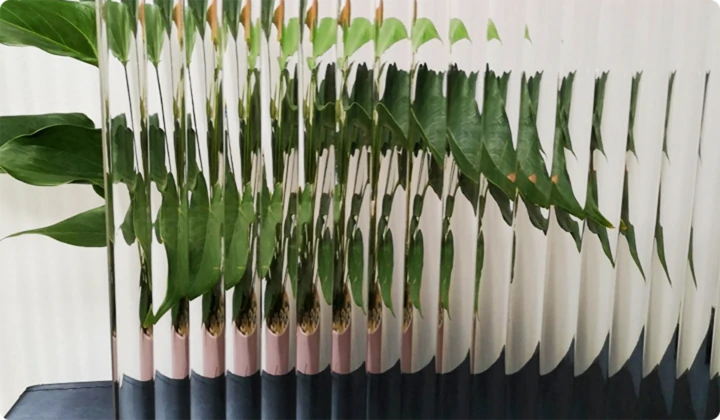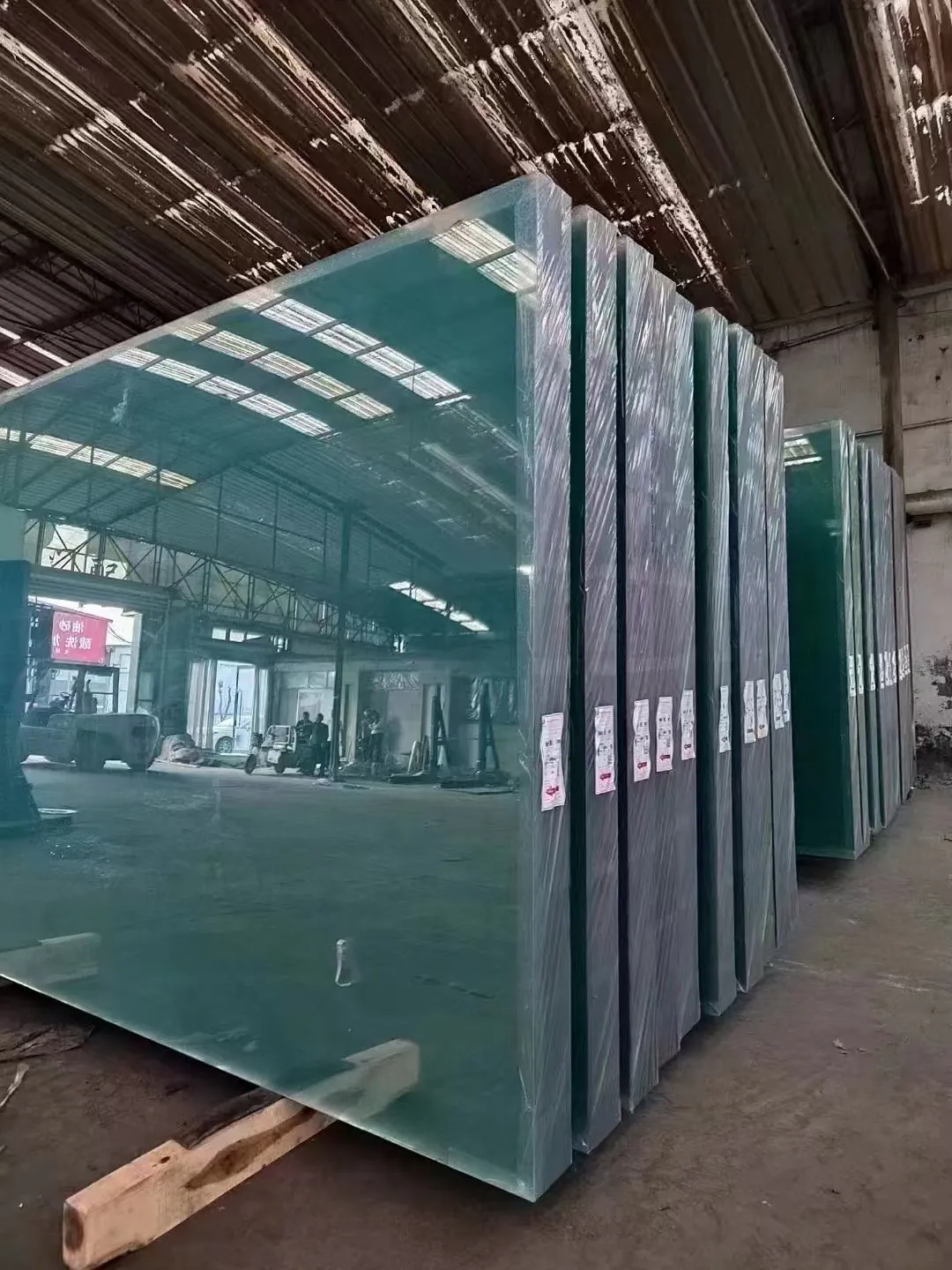Understanding the various types of tempered glass available today is critical for anyone interested in enhancing their products' durability and safety features. Tempered glass is known for its strength and heat resistance, making it a popular choice in numerous applications, including construction, automotive, and consumer electronics. Despite being widely used, many people don't fully grasp the nuanced differences among the types of tempered glass, each engineered to meet specific needs. Highlighting these differences can provide a competitive edge in product development and marketing strategies, catering to a well-informed and discerning customer base.

Tempered glass, also known as toughened glass, is manufactured through a process of extreme heating and rapid cooling. This method alters the internal structure to improve strength and safety, reducing the risk of injury upon impact. The types of tempered glass vary based on several factors, including thickness, color, and additional treatments that enhance their properties.
Clear tempered glass stands out as the most common variant due to its simplistic yet robust nature. Preferred in the construction of windows and doors, this type of glass enhances safety without compromising visibility. The clarity it offers is crucial for both aesthetic and functional purposes. Its seamless integration with existing designs makes it a favorite in modern architecture.

Frosted tempered glass adds both privacy and aesthetic appeal to spaces. By sandblasting or acid etching the surface, frosted glass diffuses light and obscures visibility while maintaining light transmission. This variant is ideal in settings such as office partitions or bathroom enclosures, where privacy is as important as style. In applications where aesthetics drive consumer decisions, frosted glass is unmatched for its elegant obscurity and subdued light manipulation.
Patterned tempered glass combines functionality with intricate designs. Used in both residential and commercial setups, this type of glass brings refined detailing to doors, windows, and even furniture. Each pattern is crafted to resonate with current design trends while maintaining the glass's core safety attributes. The innovative nature of patterned tempered glass makes it a preferred choice for those seeking customized aesthetics without compromising on durability.
types of tempered glass
For applications where strength is paramount, laminated tempered glass is invaluable. This glass consists of a layer of polyvinyl butyral (PVB) or ethylene-vinyl acetate (EVA) sandwiched between two or more sheets of tempered glass. The lamination process amplifies its strength and safety features by holding the shards in place if shattered, significantly reducing the chances of injury. Often used in automotive windshields and skylights, laminated tempered glass offers enhanced protection against impacts and adverse weather conditions.
Tinted tempered glass provides additional benefits for energy efficiency and glare reduction. Infused with pigments during the tempering process, it can absorb more solar radiation, reducing heat loss or gain and offering substantial energy savings. Tinted glass is thus a preferred option in climates where solar control is necessary, aiding in the reduction of cooling loads. Its use in automotive and architectural applications highlights the importance of energy efficiency, driving consumer interest in sustainable solutions.
Laser-engraved tempered glass represents an intersection of technology and art, offering bespoke designs tailored to personal or corporate preferences. This technique employs laser precision to etch designs or logos onto the glass surface, creating unique patterns without altering the glass’s integrity. It provides a personalized touch that is especially valuable in luxury settings or brand-specific installations.
Exploring these types of tempered glass unveils a spectrum of possibilities for those seeking products that blend safety, aesthetics, and functionality. By understanding and selecting the appropriate variant, businesses can better align their product offerings with customer needs, establishing themselves as experts in the field. The future of tempered glass continues to evolve, with constant innovations pushing the boundaries of design and performance, making it an essential consideration for any forward-thinking product strategy.
Maintaining an authoritative presence requires not only staying abreast of these evolving glass types but also anticipating future trends and consumer preferences. Trust is cultivated through consistent delivery of high-quality, informed choices regarding tempered glass solutions, thus setting the standard for excellence in product offerings.
 Afrikaans
Afrikaans  Albanian
Albanian  Amharic
Amharic  Arabic
Arabic  Armenian
Armenian  Azerbaijani
Azerbaijani  Basque
Basque  Belarusian
Belarusian  Bengali
Bengali  Bosnian
Bosnian  Bulgarian
Bulgarian  Catalan
Catalan  Cebuano
Cebuano  Corsican
Corsican  Croatian
Croatian  Czech
Czech  Danish
Danish  Dutch
Dutch  English
English  Esperanto
Esperanto  Estonian
Estonian  Finnish
Finnish  French
French  Frisian
Frisian  Galician
Galician  Georgian
Georgian  German
German  Greek
Greek  Gujarati
Gujarati  Haitian Creole
Haitian Creole  hausa
hausa  hawaiian
hawaiian  Hebrew
Hebrew  Hindi
Hindi  Miao
Miao  Hungarian
Hungarian  Icelandic
Icelandic  igbo
igbo  Indonesian
Indonesian  irish
irish  Italian
Italian  Japanese
Japanese  Javanese
Javanese  Kannada
Kannada  kazakh
kazakh  Khmer
Khmer  Rwandese
Rwandese  Korean
Korean  Kurdish
Kurdish  Kyrgyz
Kyrgyz  Lao
Lao  Latin
Latin  Latvian
Latvian  Lithuanian
Lithuanian  Luxembourgish
Luxembourgish  Macedonian
Macedonian  Malgashi
Malgashi  Malay
Malay  Malayalam
Malayalam  Maltese
Maltese  Maori
Maori  Marathi
Marathi  Mongolian
Mongolian  Myanmar
Myanmar  Nepali
Nepali  Norwegian
Norwegian  Norwegian
Norwegian  Occitan
Occitan  Pashto
Pashto  Persian
Persian  Polish
Polish  Portuguese
Portuguese  Punjabi
Punjabi  Romanian
Romanian  Russian
Russian  Samoan
Samoan  Scottish Gaelic
Scottish Gaelic  Serbian
Serbian  Sesotho
Sesotho  Shona
Shona  Sindhi
Sindhi  Sinhala
Sinhala  Slovak
Slovak  Slovenian
Slovenian  Somali
Somali  Spanish
Spanish  Sundanese
Sundanese  Swahili
Swahili  Swedish
Swedish  Tagalog
Tagalog  Tajik
Tajik  Tamil
Tamil  Tatar
Tatar  Telugu
Telugu  Thai
Thai  Turkish
Turkish  Turkmen
Turkmen  Ukrainian
Ukrainian  Urdu
Urdu  Uighur
Uighur  Uzbek
Uzbek  Vietnamese
Vietnamese  Welsh
Welsh  Bantu
Bantu  Yiddish
Yiddish  Yoruba
Yoruba  Zulu
Zulu 


